Views: 0 Author: Site Editor Publish Time: 2025-11-05 Origin: Site











The Polyprop chair represents one of the most profound design revolutions in furniture history—a moment when innovative manufacturing technology collided with democratic ideals to create something genuinely transformative. Conceived by British designer Robin Day in 1963, this extraordinary piece emerged from a deceptively simple vision: could affordable, mass-produced seating be genuinely beautiful and functionally excellent? The answer revolutionized how schools, hospitals, factories, and institutional spaces worldwide organized their environments.
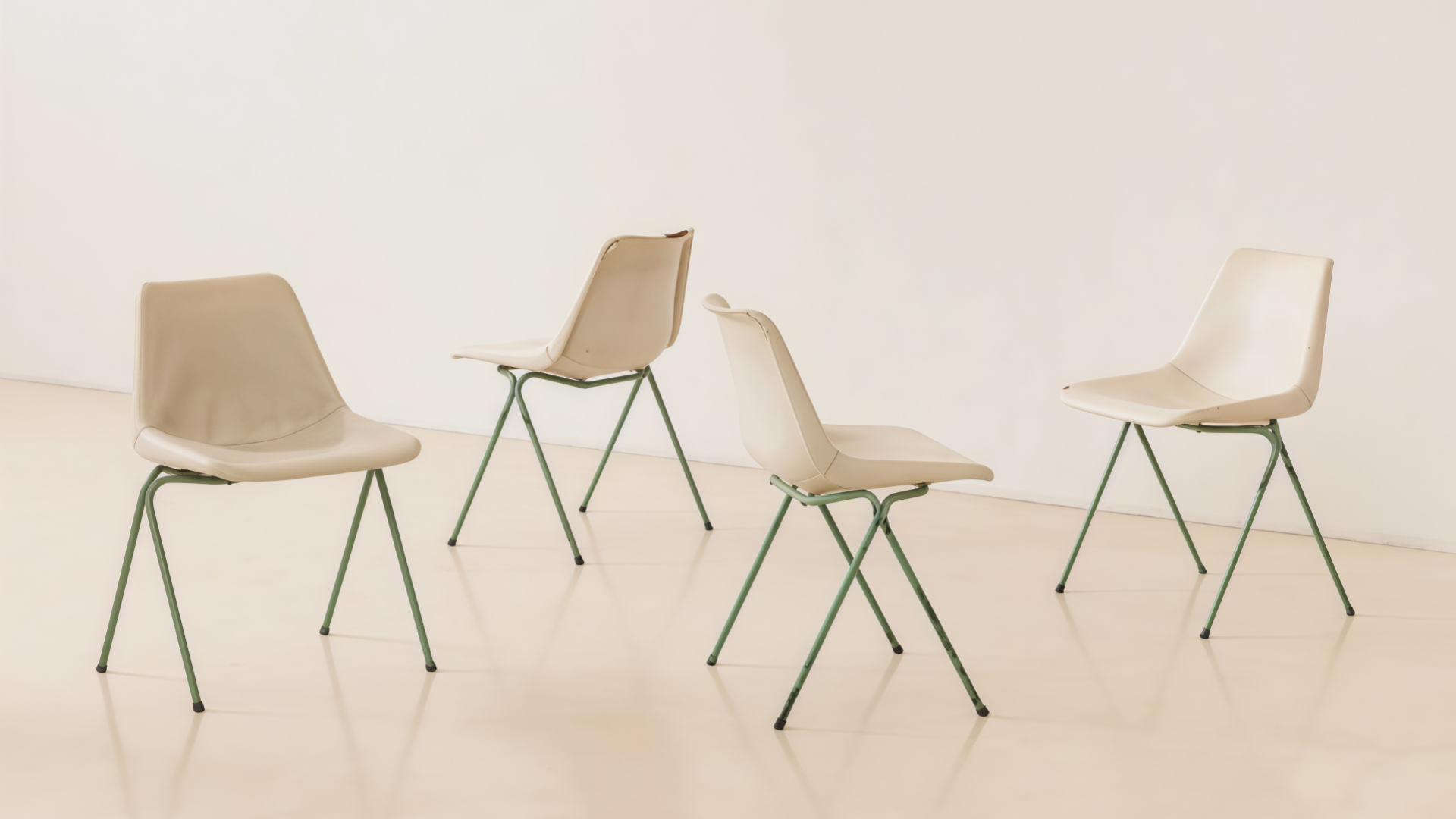
What distinguishes the Polyprop chair from prior seating innovations is its revolutionary manufacturing methodology. Rather than employing traditional carpentry or even fiberglass techniques requiring expensive labor and tooling, Day pioneered injection-molded polypropylene production—a technique enabling single shells to be manufactured in under two minutes while maintaining structural excellence. This innovation democratized modern design, placing aesthetically sophisticated, functionally superior furniture within economic reach of ordinary institutions.
The chair's trajectory from Robin Day's initial conception to present-day ubiquity remains unparalleled in design history. Estimates suggest over 14 million polypropylene chairs have been manufactured globally since 1963, appearing in virtually every context imaginable: school classrooms and auditoriums, hospital waiting areas, factory cafeterias, village assembly halls, dining facilities, conference centers, and institutional spaces worldwide. The design persists unchanged in fundamental character—testimony to Robin Day's extraordinary prescience in understanding how manufacturing innovation could transcend commercial interests to serve genuine human needs.
For educational institutions particularly, the polypropylene chair represented revolutionary transformation. Schools operating with severe budget constraints could acquire design-excellent, functionally sophisticated furniture previously economically inaccessible. Lightweight, durable, stackable, and exceptionally easy to clean, the chairs addressed practical requirements dominating educational facility management while maintaining aesthetic integrity. This comprehensive guide explores the polypropylene chair's revolutionary manufacturing history, innovative design principles, material specifications, educational applications, and its enduring influence on institutional furniture worldwide.
The Polyprop chair represents a watershed moment in applying advanced manufacturing technology to furniture production. Understanding the manufacturing innovations and material science reveals why this design achieved such profound cultural and economic impact.
Giancarlo Piretti's vision began with recognizing that polypropylene—a thermoplastic invented in 1954 by Italian Nobel Prize winner Guilio Natta—possessed unprecedented potential for furniture production. Shell Chemical Company began manufacturing polypropylene commercially by the late 1950s, promoting its potential through design competitions. Robin Day, invited to judge one such competition, recognized immediately that polypropylene offered advantages exceeding all prior injection-moldable plastics.
Polypropylene possessed distinctive characteristics addressing fundamental furniture design challenges. Unlike earlier plastics proving brittle or prone to degradation, polypropylene demonstrated exceptional lightweight strength, flexibility, and resilience. The material remained inert—unaffected by moisture, temperature fluctuations, or environmental exposure. Most significantly, polypropylene could be injection molded—a process transforming hot molten plastic into precisely formed three-dimensional shapes through rapid cooling in steel molds.
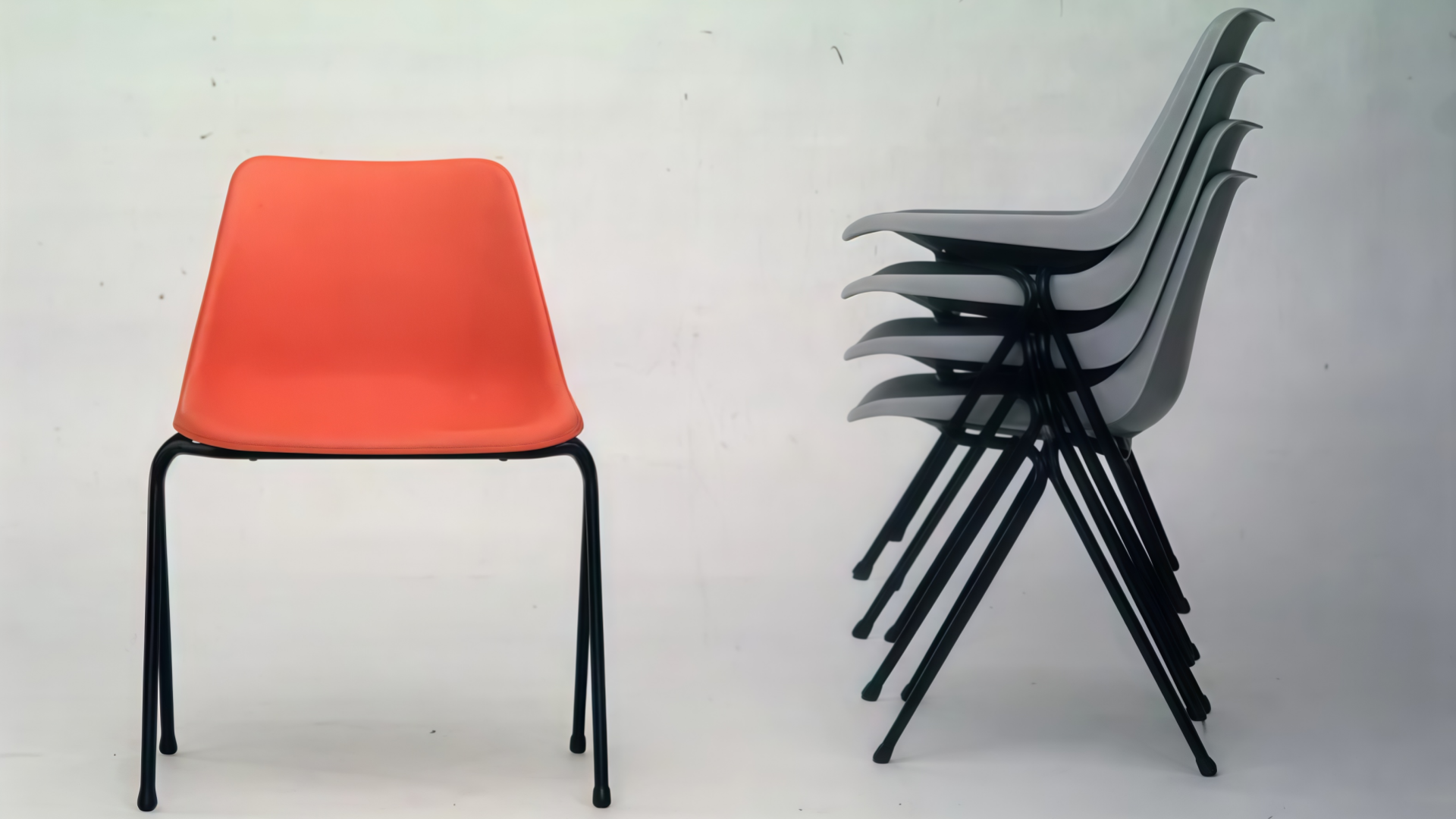
The injection molding process itself represented manufacturing innovation potentially revolutionizing furniture production. Rather than combining separately manufactured components—requiring assembly labor, multiple quality control steps, and inevitable mechanical failure points—injection molding created unified shells from single liquid material pour. A complex thermoplastic apparatus would heat polypropylene resin to approximately 200 degrees Celsius, rendering it completely plastic. High-pressure pumps would inject this molten material into precisely engineered steel molds held at controlled temperatures. Rapid cooling solidified the plastic into finished shell form within 60-90 seconds.
The economic implications proved extraordinary. A single steel mold for the polypropylene chair cost approximately £6,000—a substantial investment in 1963. However, once amortized across production, the cost per unit proved negligible. Each shell emerged in approximately 90 seconds; a single mold could produce 4,000 shells weekly—over 200,000 annually. This productivity enabled per-unit manufacturing costs revolutionary for furniture production.
| Manufacturing Element | Technical Specification | Productivity Measure | Economic Implication |
Injection Molding Cycle | 60-90 seconds per shell | 4,000 shells weekly | Minimal per-unit cost |
Material Temperature | 200°C molten injection | Rapid solidification | Consistent quality |
Mold Cost | £6,000 initial investment | Amortized across millions | Dramatically lower unit pricing |
Production Rate | 200,000+ shells annually | Single facility capacity | Unprecedented scale feasibility |
Tooling Precision | ±0.5mm dimensional tolerance | Consistent assembly fit | Reliable performance |
Robin Day's design brilliance emerged through recognizing that advanced manufacturing didn't require compromising design excellence. Rather than creating minimal product meeting basic functional requirements, he pursued sculptural sophistication enabled specifically by manufacturing capabilities. The polypropylene shell demonstrated organic curvature—a continuous surface smoothly transitioning from seat through back without visible seams or structural joints. This formal elegance emerged directly from injection molding's capacity to produce complex three-dimensional forms from single liquid pour.
The shell's structural engineering proved equally innovative. Rather than heavy material requiring massive section dimensions, Day employed the principle that continuous curved surfaces distribute structural loads efficiently. The rolled-over edge of the shell—a subtle formal feature—provided substantial structural rigidity while minimizing material usage. Underside details included integrally molded bosses enabling quick assembly to tubular steel leg frames through self-tapping screws.
The tubular steel frame completed the design system. Rather than attempting complete plastic construction—which would prove expensive and structurally inefficient for legs—Day specified seamless oval-section steel tubes painted in industrial finishes. These frames remained visible, celebrated as essential structural elements rather than concealed. Multiple frame variations enabled the shell to be mounted on diverse bases: four-legged stacking frames, cantilever supports, pedestal bases, or specialized configurations for specific applications.
The initial 1963 Mark I proved moderately successful; subtle refinements emerged. In 1964, Day increased seat width by approximately 12 centimeters, responding to comfort feedback while maintaining design essence. This Mark II version—still produced today—represented the definitive iteration. Despite over 60 years of continuous production, the design remains essentially unchanged, remarkable testimony to initial design excellence.
The Polyprop chair embodies design philosophy Robin Day termed "democratic design"—asserting that excellent design should become accessible to ordinary people through mass production rather than remaining confined to luxury markets. Understanding these philosophical foundations reveals how the chair transcended functional object to become cultural statement about design's social responsibilities.
Robin Day grew up in High Wycombe, England—a furniture manufacturing town where timber industries dominated employment. This childhood immersion in practical craft traditions combined with formal design education at the Royal College of Art shaped his conviction that designer responsibility extended beyond creating beautiful objects for affluent clients. Designers possessed ethical obligation to ensure that excellence reached ordinary people through accessible manufacturing.
The postwar period (1945 onwards) created unique conditions enabling this vision. Rationing and material scarcity encouraged designers to pursue functional sophistication while minimizing resource consumption. Day's commitment to efficient material utilization and functional necessity emerged from this austere context. Every design element required justification; ornamentation serving purely aesthetic purposes seemed morally questionable when material resources remained genuinely scarce.
This philosophical foundation influenced how Day approached the polypropylene chair design challenge. Rather than creating luxury item demonstrating technical virtuosity, he pursued affordable excellence: a chair delivering genuine comfort and durability while remaining economically accessible to schools operating with constrained budgets. The design's apparent simplicity—a single molded shell, minimal tubular frame—emerged from disciplined commitment to reducing manufacturing complexity, tooling costs, and therefore retail pricing.
The shell's visual language reflected this philosophy. Unlike furniture emphasizing ornamental elaboration or material luxury, the polypropylene chair celebrated material honesty and functional necessity. The continuous curved shell, arising directly from injection molding's geometric possibilities, required no decoration. The transparent or translucent acrylic options enabled colors appearing joyful while minimizing per-unit cost. The design communicated respect for occupants—suggesting that functional excellence deserved priority over superficial styling.
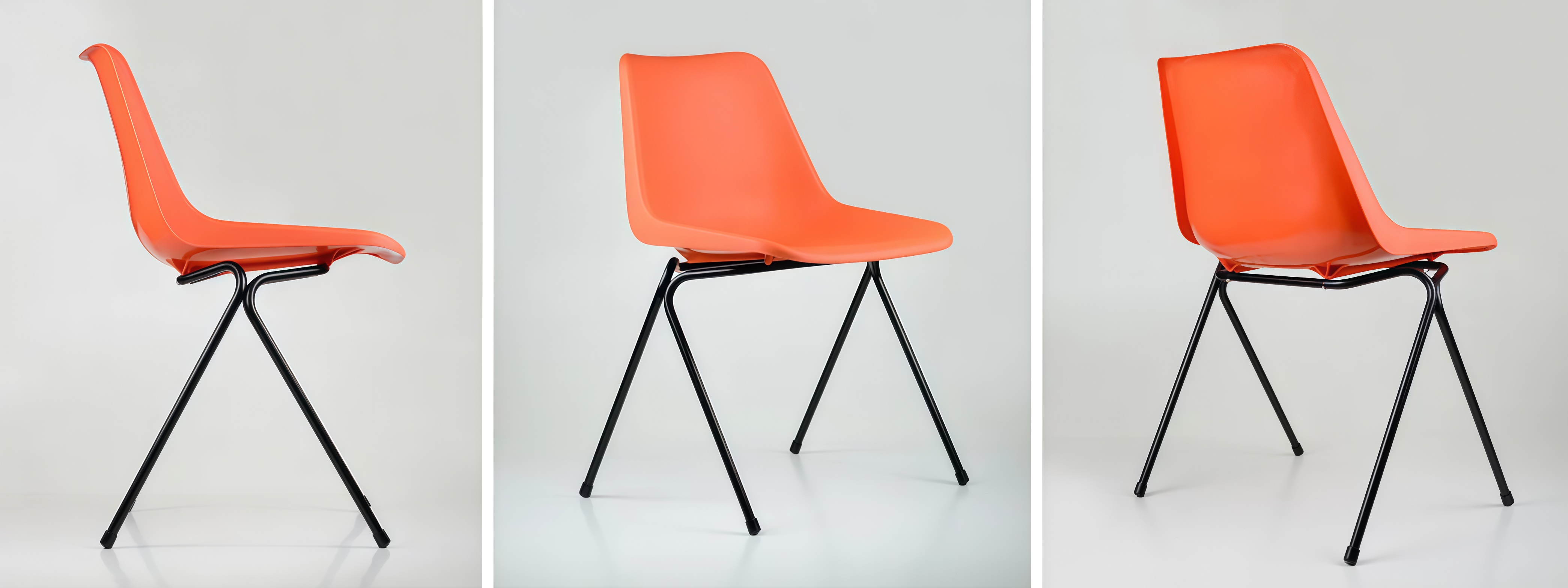
| Design Principle | Application | Institutional Benefit | Social Implication |
Democratic Access | Affordable mass production | Schools acquire design excellence | Eliminates wealth-based design segregation |
Material Honesty | Visible polypropylene celebration | Authentic aesthetic integrity | Rejects false luxury pretension |
Functional Necessity | Every element serves purpose | Disciplined, refined design | Communicates respect for users |
Efficient Production | Minimal components, rapid assembly | Maximized affordability | Enables institutional adoption |
Longevity and Durability | Quality materials, robust engineering | Extended product lifecycle | Sustainable resource utilization |
Robin Day's design philosophy departed markedly from 1960s marketing culture emphasizing planned obsolescence and fashionable styling. He insisted that genuine design serves human needs across extended timeframes, transcending momentary trends. The polypropylene chair would be manufactured unchanged for decades because the design addressed enduring functional and aesthetic requirements.
This longevity philosophy proved remarkably prescient. Contemporary design discourse increasingly emphasizes sustainability and extended product lifecycles; Day's vision aligns perfectly with contemporary environmental consciousness. A 14-million-unit product manufactured continuously for over 60 years with minimal design revision represents extraordinary sustainability achievement compared to fashion-driven alternatives requiring replacement every few seasons.
The polypropylene chair has emerged as revolutionary furniture for educational institutions, fundamentally transforming how schools, universities, and learning centers organize adaptable environments. Contemporary applications reveal remarkable versatility addressing diverse pedagogical and practical requirements.
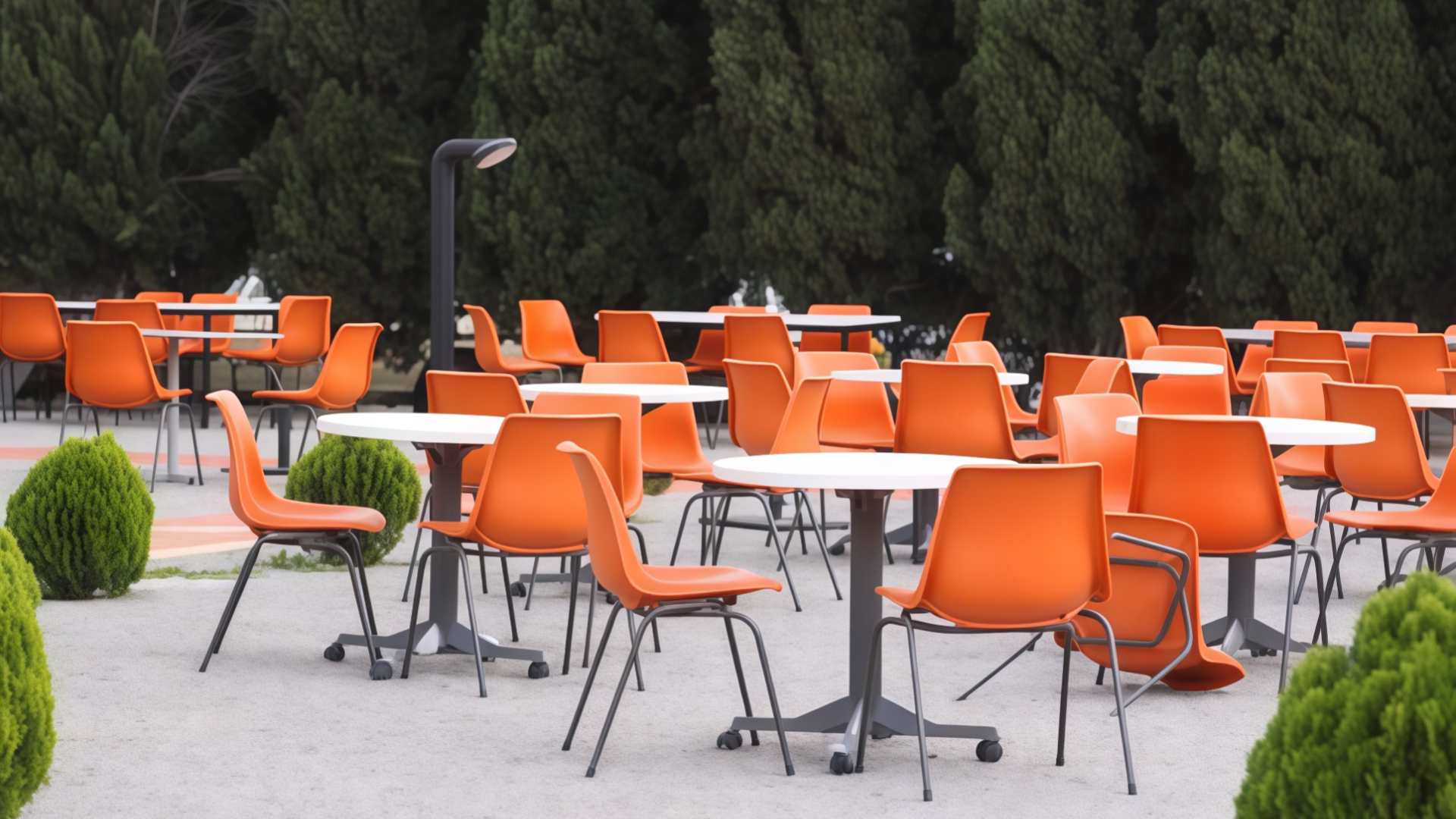
Contemporary educational approaches increasingly emphasize flexible learning environments accommodating diverse instructional strategies—from traditional lecture formats to collaborative group work, project-based learning, and seminar discussions. Educational furniture must enable rapid reconfiguration supporting these diverse modalities. The polypropylene chair addresses this requirement uniquely.
Lightweight construction (approximately 3-4 kilograms per chair) enables individual students or classroom assistants to reconfigure seating arrangements rapidly. Within minutes, rooms transform from lecture configurations (chairs facing front) to collaborative settings (chairs grouped around tables) to examination environments (individual spacing). This flexibility proves essential for institutions implementing active learning pedagogies.
The stackable design enables storage efficiency within limited classroom spaces. A single storage trolley accommodates 50+ folded chairs—allowing schools to maintain substantial seating inventory without requiring dedicated large-scale storage facilities. This practical advantage proves genuinely transformative for space-constrained educational environments.
Ergonomic proportions—available in multiple sizes from kindergarten through adult dimensions—ensure appropriate seating for diverse age groups. Educational standards including BS EN 1729 specify dimensional requirements for educational furniture, ensuring developmental appropriateness. The polypropylene chair family includes marked size variations enabling schools to select appropriate proportions for specific student populations.
Educational institutions require flexible auditoriums accommodating diverse functions—from formal assemblies and presentations to performances, lectures, and community gatherings. The polypropylene chair proves ideally suited to these demanding contexts.
Stackable engineering enables rapid deployment for events, then quick storage when alternative configurations become necessary. The lightweight construction permits single individuals to handle multiple chairs during setup and teardown, dramatically reducing labor requirements compared to fixed seating or heavy conventional chairs.
Interlocking mechanisms enable linking chairs into continuous rows during assemblies, maintaining neat theater-style configurations while remaining quickly separable for alternative arrangements. This flexibility supports institutional needs for diverse event types—formal presentations requiring orderly seating, performances benefiting from tiered arrangements, or community gatherings enabling flexible groupings.
The transparent or translucent polypropylene options—available in multiple colors from soft pastels through vibrant hues—integrate successfully into diverse architectural contexts. Unlike dark opaque seating creating visual heaviness within spaces, transparent chairs enable auditorium environments to maintain visual openness while providing substantial seating capacity.
| Educational Application Context | Spatial Strategy | Pedagogical Benefit | Practical Advantage |
Classroom Flexibility | Multi-configuration capability | Supports diverse instructional approaches | Enables rapid room transformation |
Auditorium/Assembly | Rapid deployment and storage | Supports varied event requirements | Minimizes setup/teardown labor |
Dining Facilities | Durable, easily-cleaned seating | High-volume casual environment support | Hygiene maintenance efficiency |
Library Reading Areas | Lightweight informal seating | Student choice and self-direction | Portable to optimal locations |
Computer Laboratory | Individual workstation seating | Supports focused technical work | Adjustable height options |
Special Educational Needs | Varied sizing and customization | Developmental appropriateness | Inclusive learning environment support |
School dining facilities experience intensive use—multiple lunch periods accommodating hundreds of students daily. The polypropylene chair addresses these demanding operational contexts exceptionally well.
The plastic material proves extraordinarily easy to clean—crucial consideration where food service generates inevitable spills and debris. Simple soap and water removes food residue; the non-porous surface resists staining. Unlike fabric upholstery absorbing liquids and becoming unsanitary, or wood seats requiring refinishing, polypropylene maintains hygienic qualities with minimal maintenance.
The material's durability withstands aggressive cleaning protocols necessary in food service contexts. High-pressure washers, chemical sanitizers, and intensive scrubbing protocols maintain the surface without degradation. This robustness enables institutions to prioritize hygiene without equipment damage concerns.
Casual community spaces—student lounges, recreation areas, informal gathering zones—benefit from the polypropylene chair's spatial efficiency and visual lightness. Lightweight portability enables spaces to reconfigure spontaneously around student needs. Multiple color options enable aesthetic integration into contemporary institutional design while maintaining functional excellence.
Beyond educational contexts, Polyprop chairs appear throughout institutional environments: hospital waiting areas, medical clinics, government offices, and community facilities. The material properties addressing educational requirements prove equally valuable in healthcare contexts.
Hygiene considerations dominate medical environments. The polypropylene surface resists bacterial growth—particularly important in facilities treating infection-control as paramount concern. Contemporary antimicrobial polypropylene variants employ silver-ion-based additives actively preventing microbial colonization, addressing healthcare facility requirements for enhanced sanitation.
Weight capacity specifications accommodate diverse patient populations, typically supporting individuals up to 250-300 pounds depending on specific models. Specialized options include reinforced construction for bariatric applications, accommodating individuals exceeding standard weight parameters.
The stackable design enables healthcare facilities to rapidly reconfigure waiting areas, accommodate treatment spaces requiring seating flexibility, or restore standard configurations as patient needs evolve. This adaptability supports operational efficiency while maintaining comfort for individuals in vulnerable health states.
The Polyprop chair remains in continuous production since its 1963 debut—a remarkable achievement demonstrating enduring design relevance. Contemporary manufacturing maintains extraordinary fidelity to original specifications while incorporating modern material refinements and production optimizations.
S. Hille & Co. (now Hille International, subsequently part of Allermuir Group) continues producing the polypropylene chair through advanced manufacturing processes. Modern computer-aided design ensures dimensional precision; roboticized welding produces structural consistency; automated quality control verifies each chair meets exacting standards.
Contemporary production offers customization options enabling design flexibility while preserving essential characteristics. Polypropylene colorways extend far beyond the original limited palette—vibrant contemporary colors, soft pastels, and even patterned options enable aesthetic customization aligned with institutional branding or design preferences. The tubular steel frame appears in multiple finishes: chrome-plated for gleaming contemporary contexts, powder-coated black or white for minimalist environments, or institutional colors matching organizational palettes.
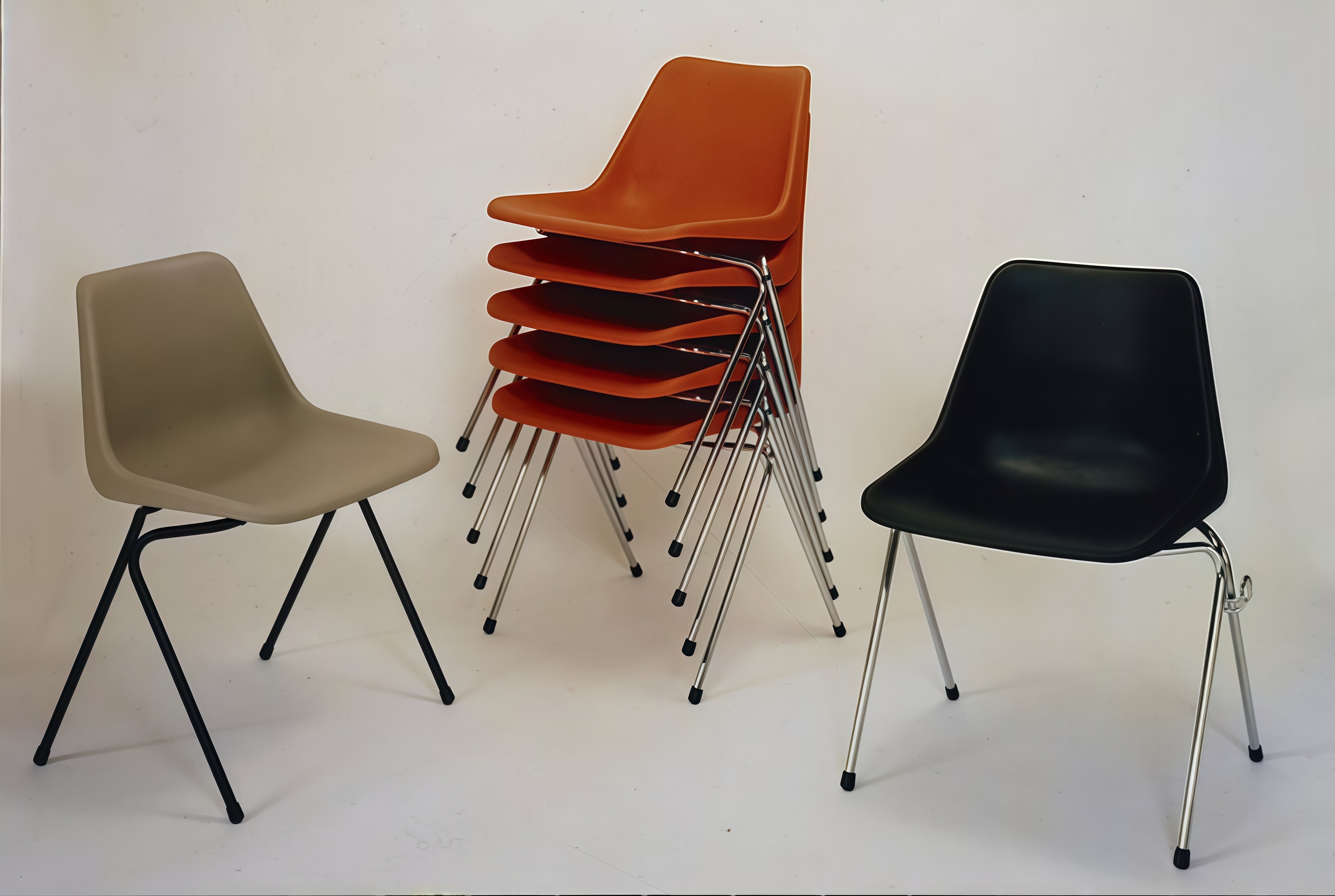
Material specifications reflect contemporary advancements. Modern polypropylene formulations offer enhanced UV resistance, reduced yellowing over extended exposure, and improved impact resistance compared to 1960s materials. While maintaining visual and functional properties comparable to original productions, contemporary materials promise extended lifespan and enhanced durability in varied environmental contexts.
Sustainability considerations increasingly influence contemporary production. Component replaceability enables indefinite product lifespan—worn shells can be replaced while maintaining original frame structures; faded frames can be refinished; worn casters can be substituted. This modularity contrasts sharply with disposable furniture culture, demonstrating commitment to extended product lifecycle.
Manufacturers increasingly source polypropylene from recycled content suppliers, particularly polyspex—recycled polypropylene offering environmental benefits alongside functional performance identical to virgin material. Welding processes minimize waste; shipping optimization reduces transportation emissions. Contemporary production reflects design industry's increased environmental consciousness while honoring Robin Day's original commitment to material efficiency.
The Polyprop chair transcends simple furniture classification to represent paradigmatic shift in design thinking. It demonstrates that advanced manufacturing innovation, when guided by genuine commitment to accessibility, need not compromise aesthetic ambition or functional excellence. Nearly 65 years following its revolutionary debut, the chair maintains capacity to inspire contemplation about design's social responsibilities and potential.
For educational institutions particularly, the polypropylene chair represents more than efficient, affordable seating. It embodies commitment to excellence accessible to all students regardless of institutional wealth. It enables pedagogical flexibility supporting contemporary learning approaches. It demonstrates institutional values prioritizing thoughtful design and human-centered functionality. The chair's elegant simplicity—deceptively complex in its engineering—reflects educational values about clarity, efficiency, and honest communication.
Contemporary challenges in institutional facility design increasingly emphasize flexibility, sustainability, and human-centered approaches. The polypropylene chair's enduring relevance emerges from fundamental alignment with these contemporary priorities. In environments emphasizing environmental consciousness, the chair's durability and reparability demonstrate long-term thinking transcending throwaway culture. In contexts prioritizing inclusive, adaptable learning, the chair's portability and stackability support evolving pedagogical approaches. In institutions navigating budget constraints, the chair's affordable excellence provides design quality without financial burden.
Robin Day's vision of democratic design—that exceptional design rightfully belongs in everyday contexts rather than confined to museums or luxury markets—remains perpetually contemporary. The Polyprop chair embodies this vision perfectly, having served hundreds of millions of individuals across institutional settings globally. This democratization represents perhaps the design's most significant achievement: proof that innovation, when guided by genuine commitment to accessibility, can transform ordinary experiences into encounters with authentic design excellence.
The Polyprop chair transcends temporal fashion through fundamental design excellence addressing enduring human needs rather than pursuing momentary aesthetic trends. Its continuous curved shell emerged from disciplined response to manufacturing capabilities rather than stylistic decoration. This functional authenticity enables the design to integrate seamlessly into diverse institutional contexts—from mid-century school environments to contemporary settings—without appearing dated. The chair's revolutionary engineering significance within design history ensures continued scholarly attention and cultural recognition. Contemporary manufacturers maintain consistent production adhering to original specifications while incorporating subtle material innovations, ensuring functional performance while preserving aesthetic integrity. Educational institutions particularly value the design's timeless quality—recognizing that investing in this furniture enhances facilities regardless of architectural evolution. The chair represents investment in enduring excellence rather than fashion-driven acquisition.
Polypropylene offered substantial advantages over fiberglass and earlier molding plastics. Most significantly, polypropylene cost dramatically less—both material and manufacturing. A single fiberglass mold might cost £40,000-60,000; polypropylene tooling cost approximately £6,000. Per-unit manufacturing time proved revolutionary: polypropylene shells emerged in 60-90 seconds compared to fiberglass requiring 15-20 minutes per piece. Material properties exceeded fiberglass: polypropylene demonstrated superior flexibility and impact resistance, proving less brittle. The material remained inert—unaffected by moisture or temperature fluctuations—unlike early plastics prone to degradation. Manufacturing consistency proved superior to fiberglass's manual layup processes. These economic and technical advantages directly enabled affordable mass production supporting Robin Day's democratic design philosophy.
Stackability provides benefits extending well beyond simple storage efficiency. The lightweight, portable design enables rapid classroom reconfiguration supporting diverse instructional approaches—essential for contemporary pedagogies emphasizing flexible learning. Single individuals can reconfigure seating without requiring mechanical assistance or multiple handlers. Stackable capability permits schools to maintain substantial seating inventory without requiring dedicated large-scale storage. Setup and teardown for events demand minimal labor and time. The design facilitates spontaneous learning activities responding to student needs without furniture reconfiguration complications. Portability enables space multipurposing—auditoriums transform rapidly between assembly configurations and alternative uses. These operational advantages translate into genuine educational facility management efficiencies.
Educational purchasing should prioritize chairs meeting BS EN 1729—the British standard specifically addressing Furniture for educational institutions. This standard encompasses two parts: Part 1 specifies functional dimensions aligned with age and body size (ensuring developmental appropriateness), and Part 2 addresses safety requirements and test methodologies. Standards verification ensures chairs undergo impact testing, structural load verification, and dimensional accuracy validation. Chairs should be appropriately size-marked, corresponding to intended student ages. These standards ensure furniture safety and durability despite intensive classroom use. Institutional purchasing specifications should explicitly require certification compliance, protecting students while ensuring long-term furniture investment value.
The polypropylene chair demonstrates remarkable environmental performance despite contemporary criticism of plastic furniture. Continuous production since 1963—with millions of examples still in active use—suggests extraordinarily extended product lifespan. Contemporary alternatives, whether wood, metal, or composite options, typically require replacement every 10-20 years; the polypropylene chair frequently exceeds 40-50 year lifespans. Over extended timeframes, lifecycle environmental impact proves substantially lower than frequently-replaced alternatives. Component replaceability extends product life indefinitely. Contemporary production increasingly employs recycled polypropylene content, reducing virgin material demands. The manufacturing efficiency—minimal material usage, rapid production cycles, optimized shipping—minimizes resource consumption compared to alternatives. However, end-of-life recycling requires appropriate infrastructure; some designs don't facilitate complete material recovery.
The polypropylene chair achieved cultural significance through representing watershed design moment: proof that advanced manufacturing, when guided by genuine commitment to accessibility, could produce authentic design excellence accessible to ordinary people. The design challenged assumptions that aesthetic sophistication required luxury materials and handcrafted production. Its revolutionary manufacturing approach demonstrated that industrial production could serve democratic ideals while maintaining artistic integrity. The chair's ubiquity—appearing in virtually every British institutional context—transformed it from functional object into cultural touchstone. Its selection for Royal Mail's 2009 "British Design Classics" stamp series acknowledged that genuinely influential design often operates invisibly, achieving significance through integration into everyday experience rather than display prominence. Museum acquisitions recognized the chair's historical importance as material culture artifact documenting postwar design philosophy and manufacturing innovation.